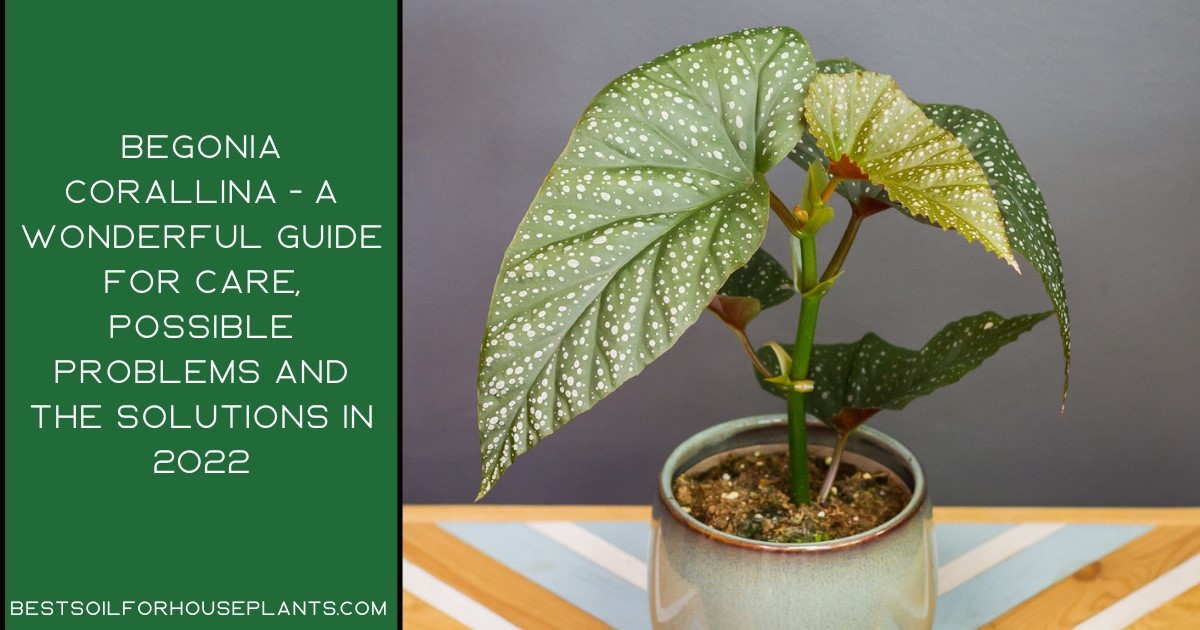Indoor plants make our home cozier, improve air quality and cheer up the mood. Plants take care of us, so we should take care of them. Let’s get acquainted with one of the most beautiful and unpretentious options for a houseplant – Begonia Corallina.

Begonia Corallina Kinds
There are several beautiful species of this gorgeous plant, among which you can choose a friend for yourself:
- “Begonia Medora” – this variety has small green leaves with spots and blooms with lush pink buds;
- “Fanny Moser”– one of the most popular varieties of begonia, which has dark, almost black leaves with bright spots;
- “Begonia Frosty” – rich green leaves with bright spots. Often grown for foliage, not flowers;
- “Pink Mink” – has deep green, almost black leaves with pale pink spots;
- “Begonia Lucerna” – is an indoor grower’s absolute favorite. It produces hanging clusters of delicate pink flowers; foliage is the traditional wing-shaped leaves with silver spots;
- “My special angel” – perfect for trailed hanging baskets. Classic dark green leaves with white drops and wonderful pink flowers reminiscent of sakura petals, like angel wing begonia.
You can also look for detailed information on other varieties of angel wing begonias, such as “Begonia Maculata”, “Begonia Tamaya”, “Polka Dot Begonia”, “Cracked Ice”, “Morocco”, “Torch Pink”, “Looking Glass”, “Sophia”, and “Lana”.
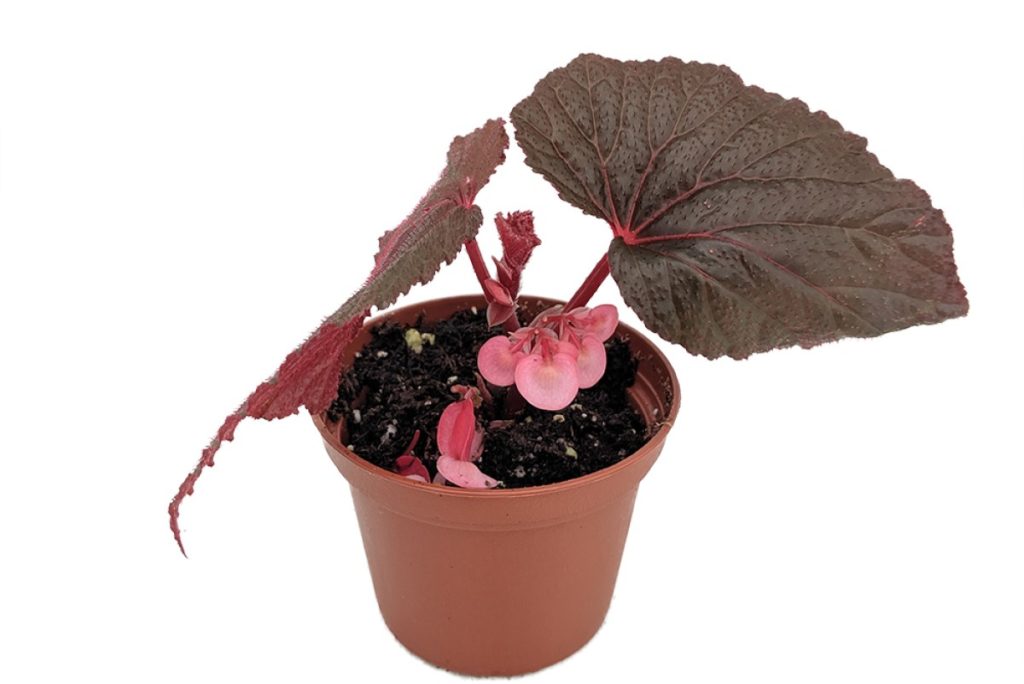
What Is Begonia Corallina?
Begonia Corallina or Angel Wing Begonia – is the best kind of begonia to grow in your home. This graceful indoor plant with glossy spotted leaves and luxurious flower clusters will delight every owner and decorate any room in which it is located.
This kind of begonia is pleasant not only for its appearance but also for its relatively unpretentious nature, which distinguishes it from other kinds. Therefore, you can purchase it even if you are a beginner in houseplant growing.
Dwarf varieties usually do not grow more than 12 inches wide, while large varieties can reach 36 inches tall and wide. The flowering of the begonias also varies, but usually occurs during winter or early spring, and the buds are pink, red, or white. By purchasing this plant for your home, you will not regret your choice!
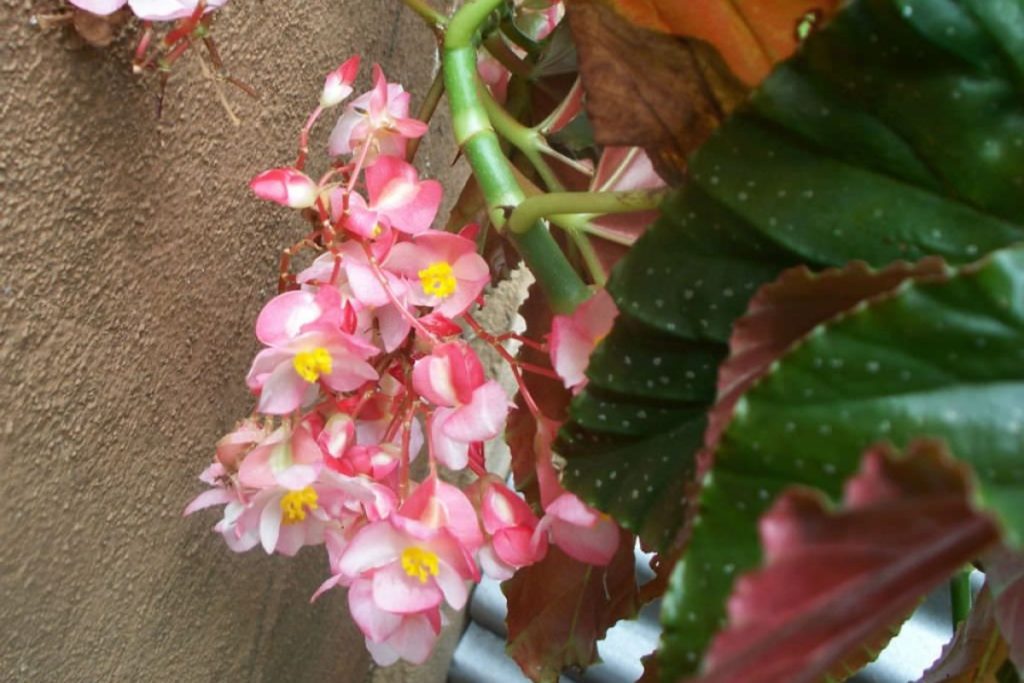
In this article, we will tell you how to care for this beautiful plant so that it is healthy and delights you for many years!
Begonia Corallina Care Tips
How to care for a begonia Corallina? This plant care is not picky at all, however, in order to achieve the best results in growing, it is important to remember these simple tips:
- WATER. Avoid over watering the plant, as this can provoke fungal diseases and root rot, or even lead to the death of the plant.
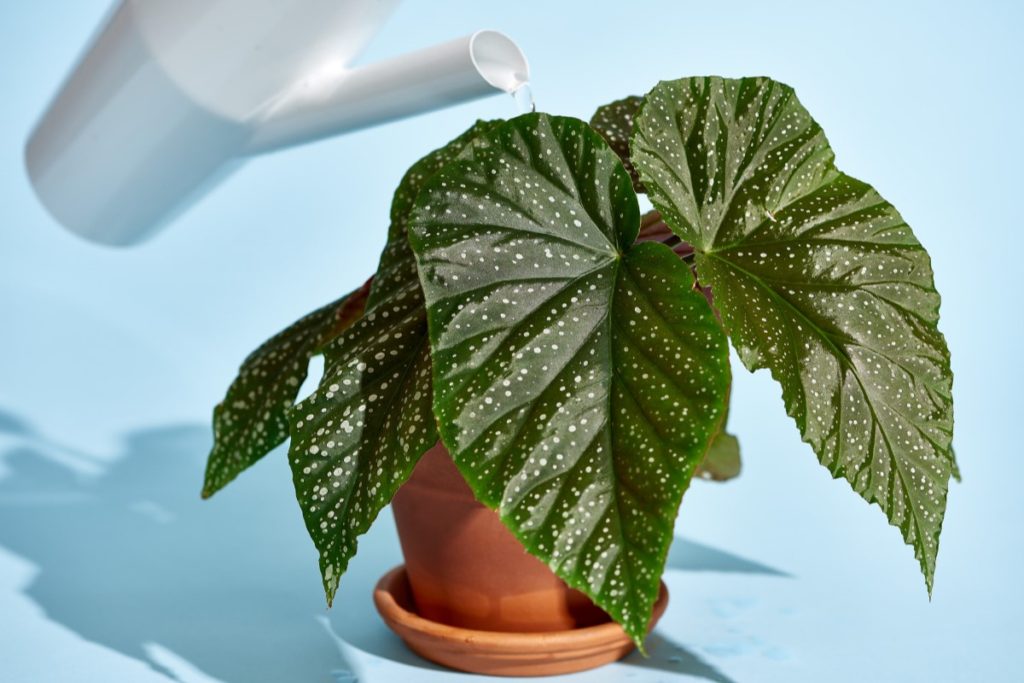
Water your Begonia regularly when 1 inch of soil in the pot is dry. To make sure it’s time to water, inspect the potting soil with your finger. During the period of winter and autumn, reduce watering, as the plant slows down vital processes.
- LIGHT. Begonias as tropical plants love light very much, but be careful not to place the plant in direct sunlight. Too much direct sunlight will cause the leaves of the plant to wilt. During the winter months, begonia will need a lot of filtered light. In summer and spring, begonia is best suited for bright diffused light.
If your house does not have a suitable sunny spot for the plant, consider installing an artificial plant lights source for your Begonia Corallina. When exposed to artificial light, 14-16 hours will be enough for the normal state of the plant.
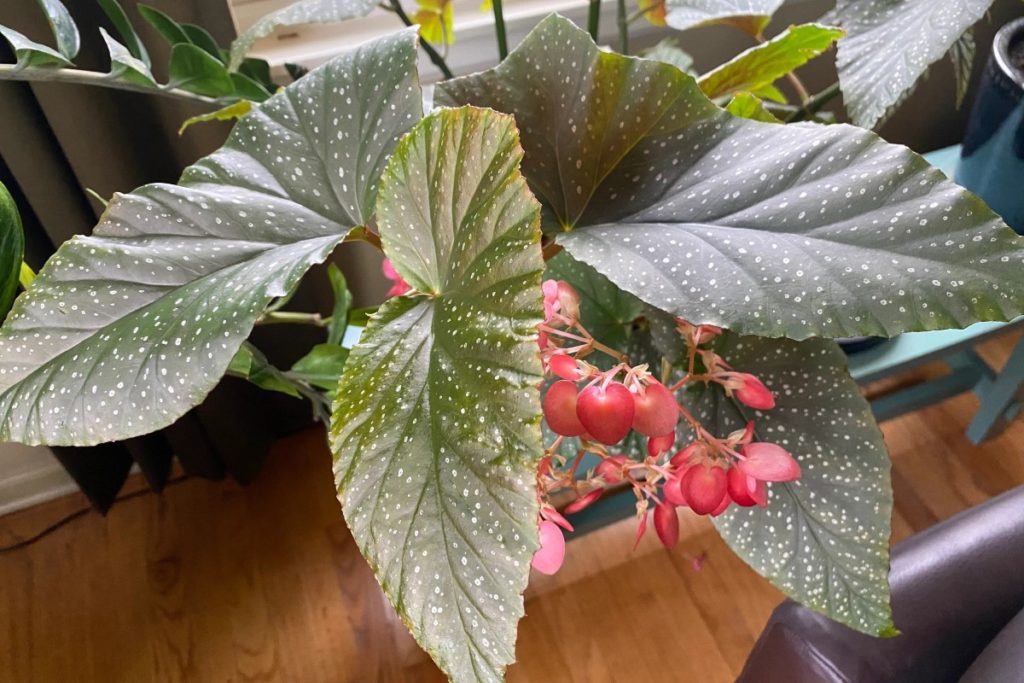
- HUMIDITY. Even though begonia is a tropical plant, there is no need for high humidity for Begonia Corallina. The average indoor humidity level will be just right for your plant. Local moisture can be created for begonia by regularly watering it from a spray bottle with room temperature water.
Be careful with the sprayer! Excessive moisture on the leaves or soil moist can lead to fungal diseases and powdery mildew, harming your begonia and the other plants. If you live in a dry climate and the air in your house is always dry, consider placing a humidifier near your plant.
- TEMPERATURE. Begonia Corallina prefers average room temperatures of 65 – 75 °F (18 – 24 °C) year-round. In the period from spring to the end of summer, your plant is not threatened with hypothermia. Always make sure to protect your begonia from cold drafts.
- SOIL. The best soil option for the plant would be a light loose potting mix with peat moss. African violet mix would be perfect for this case. Homemade mixtures like sphagnum moss and perlite in the ratio of 2:3 also work well.
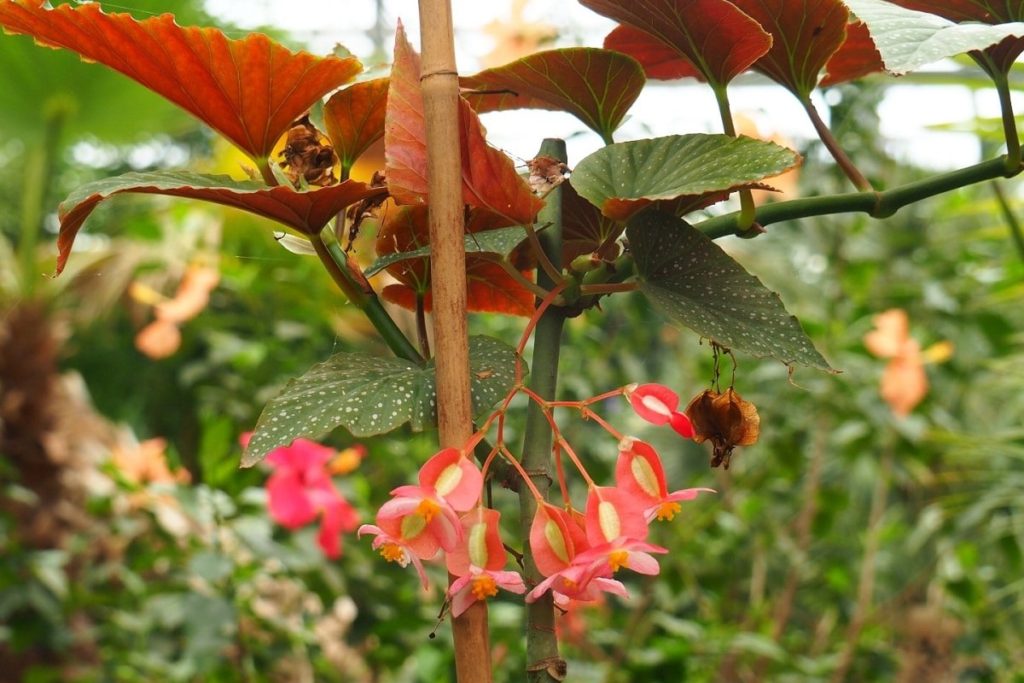
You can transplant your angel wing begonia once a year, in the spring, into a pot slightly larger than the previous one to allow the plant to grow and develop. Angel wing begonias have fibrous roots and grow best when slightly pot-bound.
- REPRODUCTION. How do you propagate Begonia Corallina? The best way to propagate Begonia Corallina is by stem cuttings. In the season of the greatest activity of plant growth – in spring and summer, root stem cuttings in moist soil and follow the instruction:
- With clean, sharp garden shears, cut a piece of stem from a healthy section of the mother plant at a 45-degree angle;
- Remove leaves from the lower one-third of the cutting. Dip the cut end into a rooting hormone powder, tap, and remove any excess;
- Put the sprout in damp soil and press the soil at the base of the cutting to stabilize it.
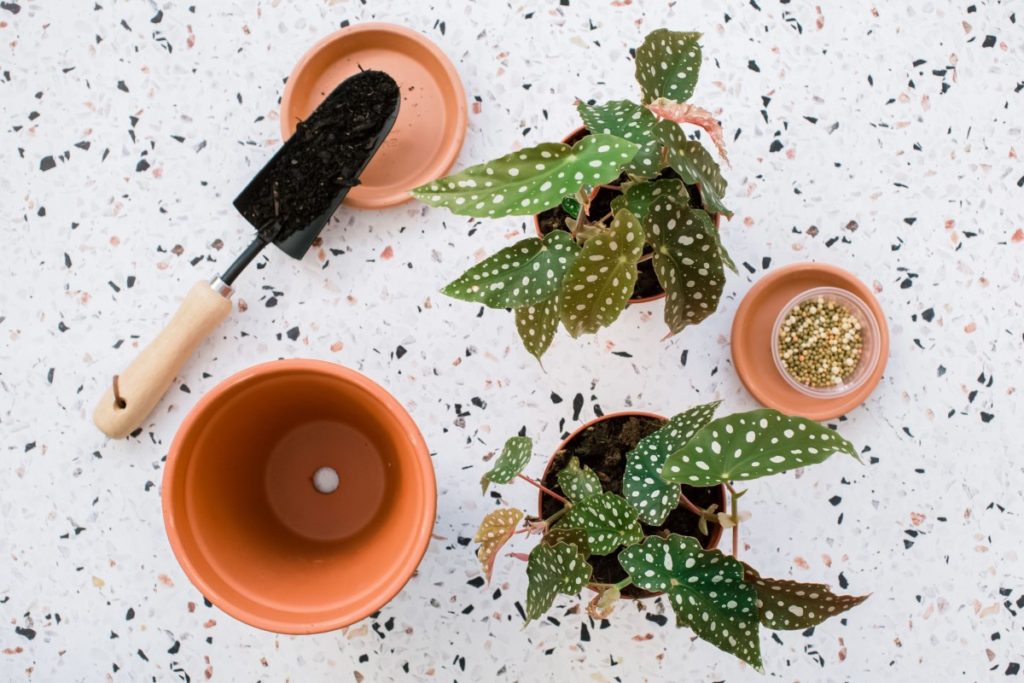
Another great way to propagate your begonia is by holding it in water. Just dip a few inches of cutting in a jar of water after letting it stay for a night. This will evaporate the chlorine from the water. Make sure to change the water twice a week to avoid fungus and rotting.
- FERTILIZING. Fertilize Begonia Corallina should be in spring and summer, during the active growth of begonias. Fertilize the begonia once a month with a good quality soluble fertilizer. However, fertilizing a sleeping plant in winter is not worth it, to avoid fertilizer burning off the plant.
If you are fond of floriculture, you will also be interested in learning how to care for plants:
- Cryptanthus acaulis
- Dieffenbachia leggy
- Rieger begonia
- Orange Star
- Dying zebra cactus
- Zebra plant care.
- I overwatered my plant
POSSIBLE PROBLEMS AND THEIR SOLUTION
Now that we have learned about Begonia Corallina and the aspects of caring for it, let’s take a look at the difficulties that you may encounter.
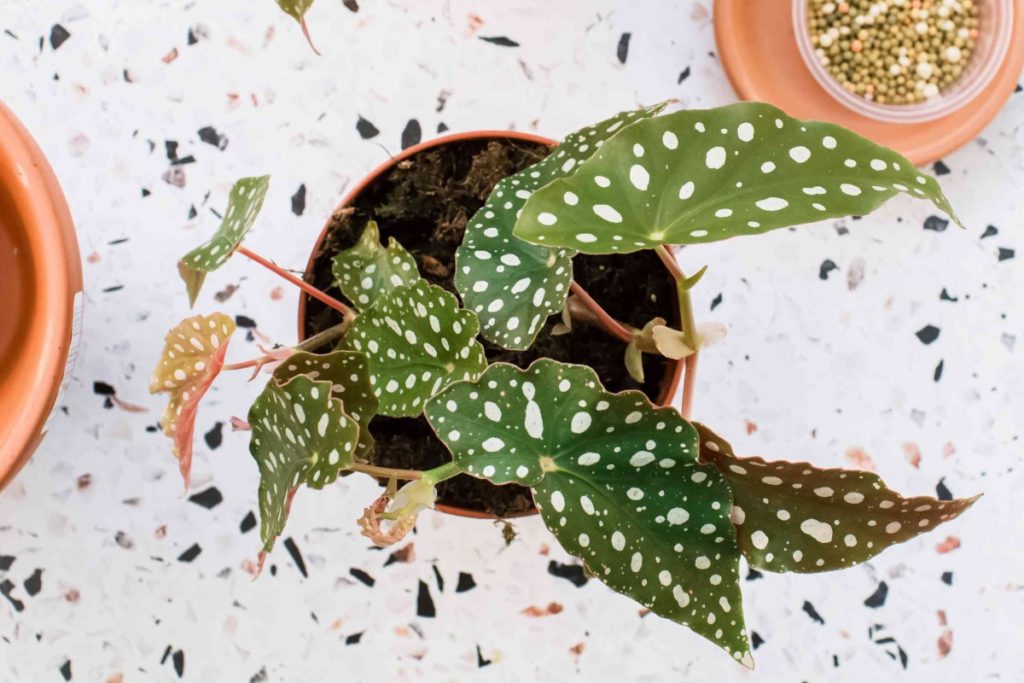
YELLOW OR BROWN LEAVES
Can be a sign of overwatering or a frozen plant. If you notice that the leaves are turning yellow, make sure the begonia is not exposed to drafts and reduce watering. Yellow leaves may also mean that your plant is being exposed to too much bright light or direct sun. Then move your Begonia Corallina closer to the shade.
DUST
Protect the Begonia Corallina leaves from dust. Put the leave in your hand and wipe it with a wet napkin or damp cloth and collect any accumulated dust. Keep the plant clean and fresh!
BROWN PATCHES
Brown patches and brown leaf tips are a symptom of dry air. You need to spray your angel wing begonia with a spray bottle or place a humidifier next to it. You can also place the pot with your begonia in a pebble tray with water to hydrate the plant.
And of course, avoid direct sun. Grow in an east-facing window during spring and summer, and a west- or south-facing window with light filtered by sheer curtains in fall and winter.
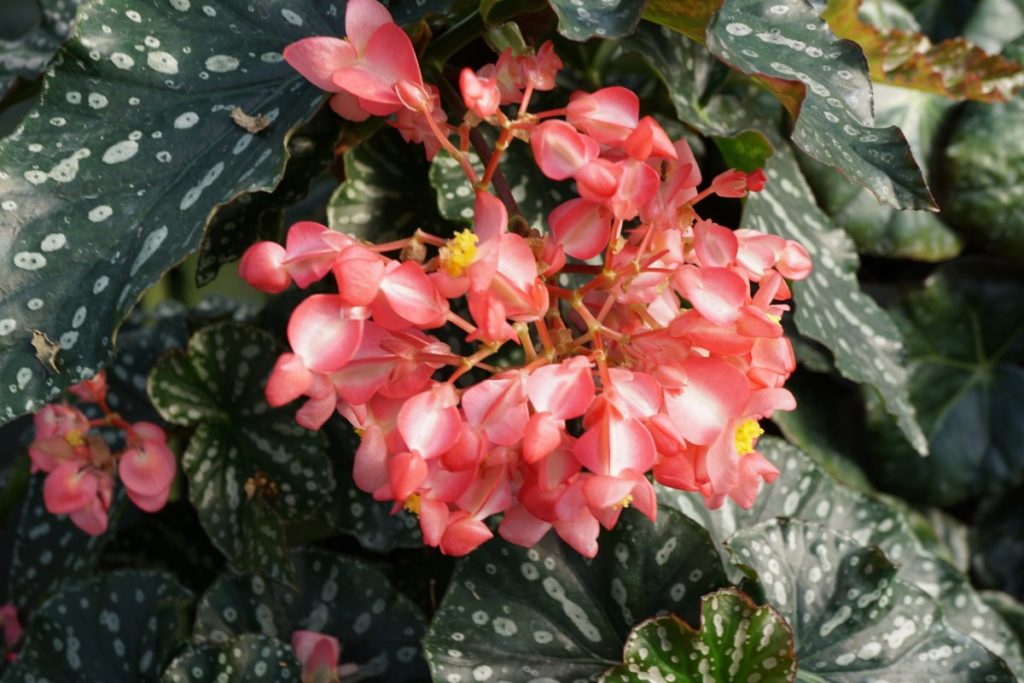
PRUNING
If you notice any dead or yellow leaves on your plants, you should cut them off. You can also prune your begonia when you want to keep it the same size. Use clean scissors or pruning begonia lucerna shears to cut stems back to a leaf node (where the leaf joins the stem). Don’t prune more than 3 – 5 inches from the soil. Your begonia should send up lots of new growth soon.
TOXICITY
Although begonia is safe for humans, keep your children and pets away from exposure to the plant. When ingested, begonia juice can provoke nausea, diarrhea, and dizziness. The insoluble oxalate crystals present in the foliage are toxic to animals. If swallowed, seek medical attention immediately!
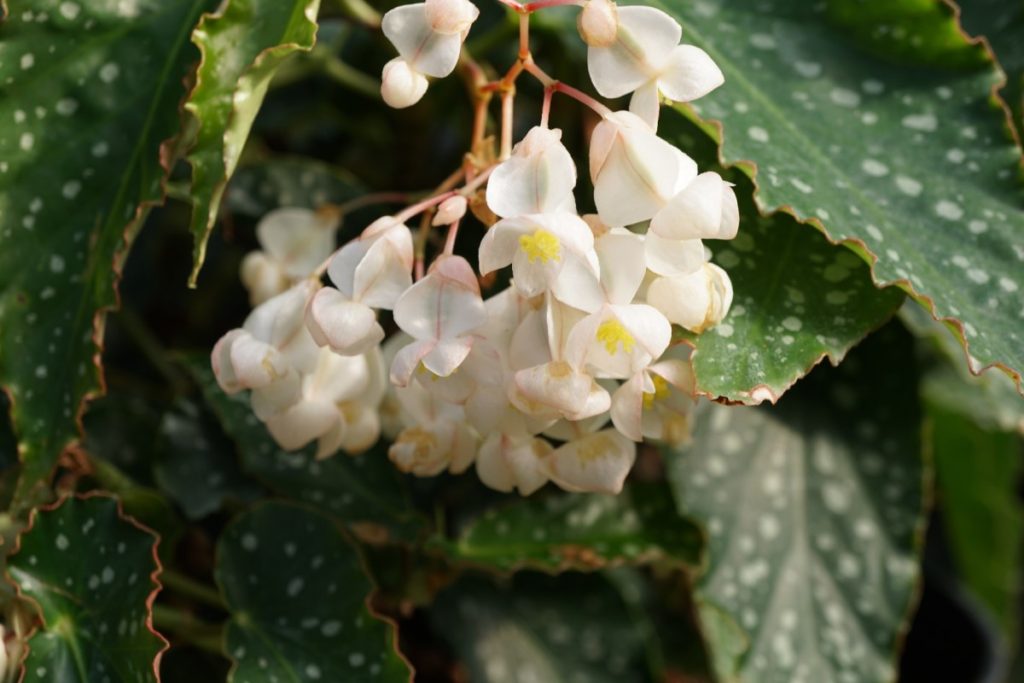
CONCLUSION
Now you know more about begonia, its varieties, caring for it, and solving problems with the plant. If the leaves of the begonia are dark green, spotty, glossy, and smooth, then you are on the right track and your plant is healthy! Let Begonia Carolina please you for many years!

